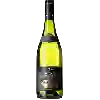
Winery Bernard DesvignesChâteau de Vénéran Muscadet Sevre et Maine
This wine generally goes well with appetizers and snacks, lean fish or shellfish.
Food and wine pairings with Château de Vénéran Muscadet Sevre et Maine
Pairings that work perfectly with Château de Vénéran Muscadet Sevre et Maine
Original food and wine pairings with Château de Vénéran Muscadet Sevre et Maine
The Château de Vénéran Muscadet Sevre et Maine of Winery Bernard Desvignes matches generally quite well with dishes of shellfish, appetizers and snacks or lean fish such as recipes of quick paella, christmas boots in knacki or fish pie and quick.
Details and technical informations about Winery Bernard Desvignes's Château de Vénéran Muscadet Sevre et Maine.
Discover the grape variety: Bachet
Bachet noir is a grape variety that originated in France (Aube). It produces a variety of grape specially used for wine making. It is rare to find this grape to eat on our tables. This variety of grape is characterized by small bunches, and grapes of small size. Bachet noir can be found cultivated in these vineyards: South West, Cognac, Bordeaux, Provence & Corsica, Rhone Valley.
Informations about the Winery Bernard Desvignes
The Winery Bernard Desvignes is one of of the world's greatest estates. It offers 2 wines for sale in the of Muscadet-Sevre et Maine to come and discover on site or to buy online.
The wine region of Muscadet-Sevre et Maine
The wine region of Muscadet-Sevre et Maine is located in the region of Muscadet of Muscadet of France. Wineries and vineyards like the Domaine de l'Ecu or the Domaine de Bellevue produce mainly wines white and red. The most planted grape varieties in the region of Muscadet-Sevre et Maine are Melon, Muscadelle and Folle blanche, they are then used in wines in blends or as a single variety. On the nose of Muscadet-Sevre et Maine often reveals types of flavors of cream, asparagus or baked apple and sometimes also flavors of honeydew melon, hay or citrus zest.
The wine region of Loire Valley
The Loire Valley is a key wine region in western France. It follows the course of the Loire River on its Long journey through the heart of France, from the inland hills of the Auvergne to the plains of the French Atlantic coast near Nantes (Muscadet country). Important in terms of quantity and quality, the region produces large quantities (about 4 million h/l each year) of everyday wines, as well as some of France's greatest wines. Diversity is another of the region's major assets; the styles of wine produced here range from the light, tangy Muscadet to the Sweet, honeyed Bonnezeaux, the Sparkling whites of Vouvray and the juicy, Tannic reds of Chinon and Saumur.
The word of the wine: Flower
Wine disease resulting in a whitish haze and a vented taste.










